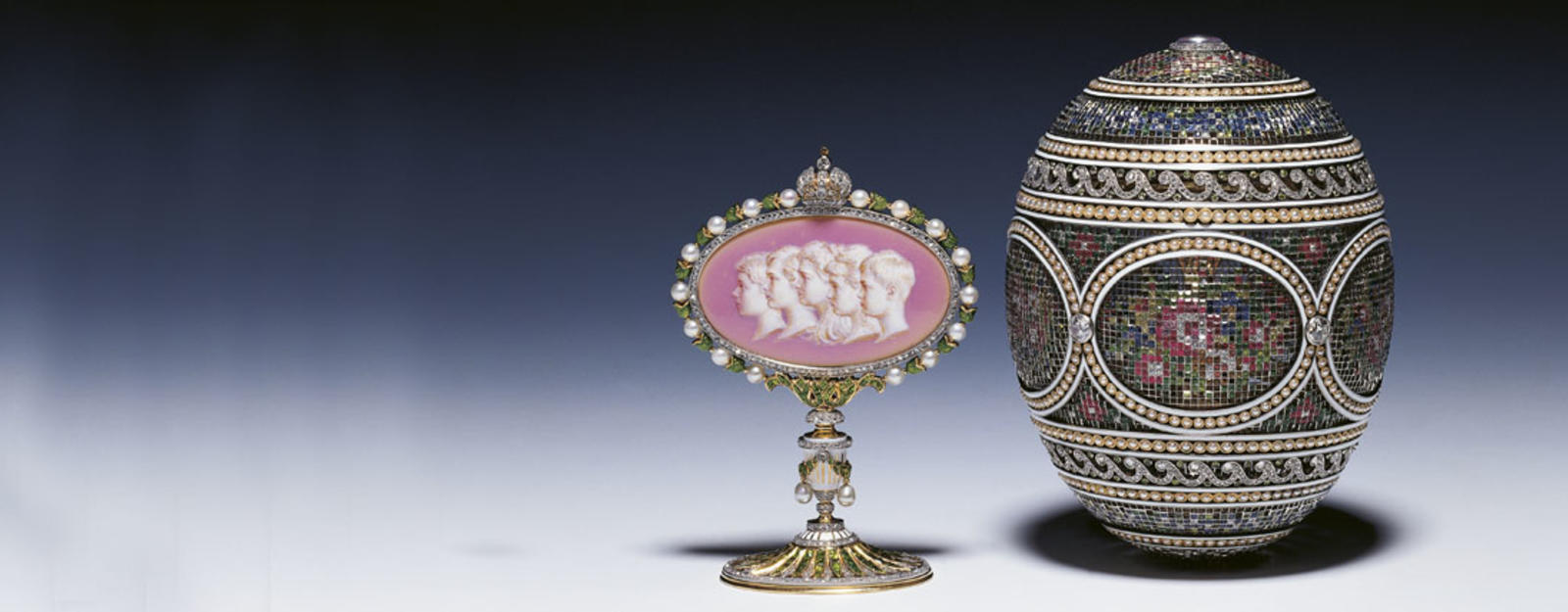Fabergé in the Royal Collection
An introduction to Fabergé in the Royal Collection

Carl Fabergé was the greatest Russian jeweller and goldsmith of the late nineteenth and early twentieth centuries. He is most famous today for the spectacular Imperial Easter Eggs he designed for the Russian royal family, but almost six hundred of his other creations are also represented in the Royal Collection. These include exquisite animal sculptures, cigarette cases and presentation boxes, as well as flower carvings, photograph frames and jewellery. Collected by the British royal family during and after his life, they constitute one of the most important Fabergé collections in the world.
Almost all the Fabergé pieces in the Royal Collection were acquired as gifts, exchanged by the Russian, Danish and British royal families. As a result, they offer an extraordinary insight into the personal lives of their owners. Queen Alexandra (1844-1925), the wife of King Edward VII, frequently exchanged Fabergé pieces as birthday and Christmas presents with her sister, Tsarina Marie Feodorovna of Russia. King Edward VII (1841-1910) meanwhile expanded the collection by commissioning portrait sculptures of his favourite pets and other animals on the Sandringham Estate.
After Fabergé's death in 1920, royal fascination with his work endured. In the 1930s, King George V (1865-1936) and Queen Mary (1867-1953) purchased the three Imperial Easter Eggs in the Collection – the Basket of Flowers Egg, the Colonnade Egg Clock and the Mosaic Egg. Queen Elizabeth The Queen Mother (1900-2002) also formed an outstanding collection of flower sculptures, ornaments and boxes. You can explore the history of some of these objects and their owners in further detail using the menu bar.







